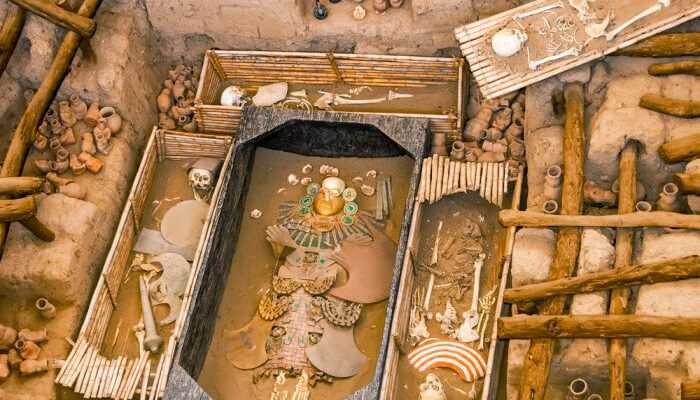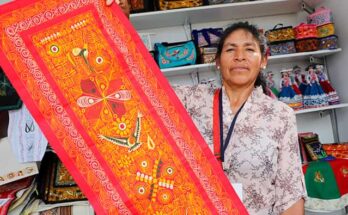The Moche civilization, also known as the Mochica, flourished along the northern coast of what is now Peru from around 100 to 700 AD. They were renowned for their remarkable achievements in art, architecture, engineering, and culture. Here’s an overview of the Moche civilization:
Artisans and Artistic Achievements:
- Ceramics: Moche artisans were particularly skilled in pottery making. They produced intricate and detailed ceramic vessels depicting various aspects of Moche life, including scenes of warfare, agriculture, mythology, and everyday activities. These vessels often showcased naturalistic and stylized portrayals of humans, animals, and mythical beings.
- Metalwork: Moche metalworkers crafted exquisite ornaments and ceremonial objects using gold, silver, and copper alloys. These included jewelry such as nose rings, ear ornaments, and pectorals, as well as elaborate headdresses and ceremonial knives.
- Textiles: Moche weavers produced finely crafted textiles using techniques such as spinning, dyeing, and weaving. These textiles featured intricate designs and patterns, often incorporating images of animals, plants, and geometric motifs.
- Mural Art: The Moche also created elaborate murals on the walls of their ceremonial and administrative centers. These murals depicted scenes of religious rituals, warfare, and everyday life, providing valuable insights into Moche society and beliefs.
Religion and Mythology:
- Ceremonial Centers: The Moche built impressive ceremonial centers, such as the Huacas del Sol y de la Luna (Temples of the Sun and the Moon), which served as religious and administrative hubs. These centers were adorned with elaborate artwork and served as focal points for religious rituals and ceremonies.
- Religious Beliefs: Moche religion was polytheistic, with a pantheon of gods and goddesses associated with natural elements, animals, and celestial bodies. The Moche believed in the existence of an afterlife and conducted elaborate burial rituals to ensure the deceased’s journey to the next world.
Social Structure and Governance:
- Hierarchy: Moche society was hierarchical, with a ruling elite at the top overseeing political, religious, and economic affairs. Beneath them were artisans, farmers, and laborers who supported the elite through tribute and labor.
- Political Organization: The Moche civilization was organized into a series of regional states or polities, each ruled by a powerful lord or ruler. These rulers controlled access to resources, trade routes, and labor, allowing them to amass wealth and exert influence over neighboring territories.
Legacy:
Despite the eventual decline of the Moche civilization around 700 AD, their artistic and cultural legacy endured. The artifacts and artworks left behind by the Moche continue to fascinate researchers and enthusiasts alike, providing valuable insights into ancient Andean civilizations and their rich cultural heritage.
In summary, the Moche civilization of northern Peru was characterized by its skilled artisans, intricate artwork, complex religious beliefs, and hierarchical social structure. Their achievements in art and culture continue to be admired and studied today, shedding light on the fascinating world of ancient Andean civilizations.



